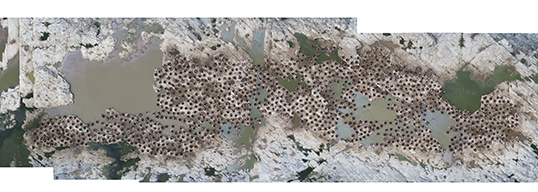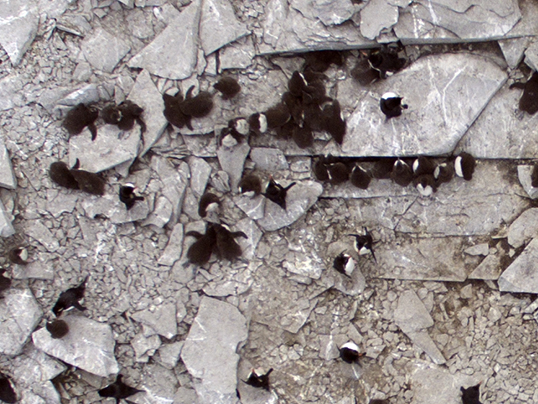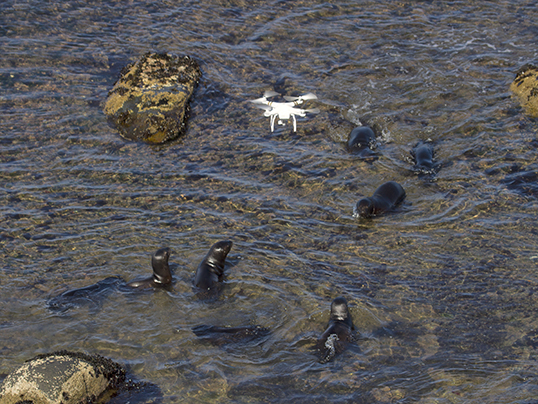Drones: counts
We are using drones to obtain pictures of marine birds colonies, and count the birds in those pictures. We also use pictures to improve counts of southern sea lion. For marine birds, the main problems are the difficulty to count large colonies, the number of counters and thetime required to obtain accurate repeated counts, and the disturbance to the birds.

A composite drone picture of the main king cormorant colony, that comprises about 1400 nesting pairs
We have seen that counts from drone pictures can be better that manual counts carried out even by experienced observers when the topography, size or shape of the colony make difficult to see all the birds and nests from the same point of view. Moreover, pictures can be counted by more than one operator, and each picture can be counted more than one time, such as measures of count reliability can be otained. Notwithstanding this, from our point of view, the greatest advantage of using drone surveys instead of manual counts is the reduction of the disturbance to the birds. A striking example are kelp gulls. Approching their colonies to count nests is very risky, because they tent to leave the nest an start overflying as soon as a human being approch them. On the contrary they show no reaction to the drone, even at rather low altitude.

Drone photo of a kelp gull colony take at 15 m of altutude, during a series of experiments to study the reaction of gulls to drones
Drone pictures are perfect to count nests of most species of colonial birds, but they are not useful in all situations. For example, they are difficult to use for penguin species in which the chicks form crèches. In this case, chicks and adults are often so packed that is difficult to count them in the pictures taken by the drone at normal altitude.

A drone picture of a crèche of rockhopper chicks
Another very useful usage of drones at Sea Lion Islan is counting southern sea lions. Their main breeding colony is on flat rocks and narrow pebble beaches below a steep cliff. Manual counts are carried out from the cliff top, and it is not easy to obtain accurate count without falling down ! We have seen that counts carried out at different times can have very large errors, due to the fact that sea lions, and pups in particular, tent to aggregate right below the cliff, where they are impossible to observe. Counts from drone picture are not only more accurate, but also permit to obtain a better estimate of the sex and age class composition.

A drone picture of the southern sea lion breeding colony; there is a group of pup right below the cliff, difficult or impossible to see from the cliff top.
Although drones can be definitely a source of disturbance for wildlife, in our fly experience at Sea Lion Island we never observed any significant negative effect, at least when flying at an altitude useful to take the kind that we need for the counts.

Our Phantom III drone over a group of southern sea lion pups that are playing in shallow water. This was taking during experiments on the effect of flying altitude on sea lion behaviour.
For more information please contact us by email at fil_esrg@eleseal.org. Thank you for your interest in our research projects !
